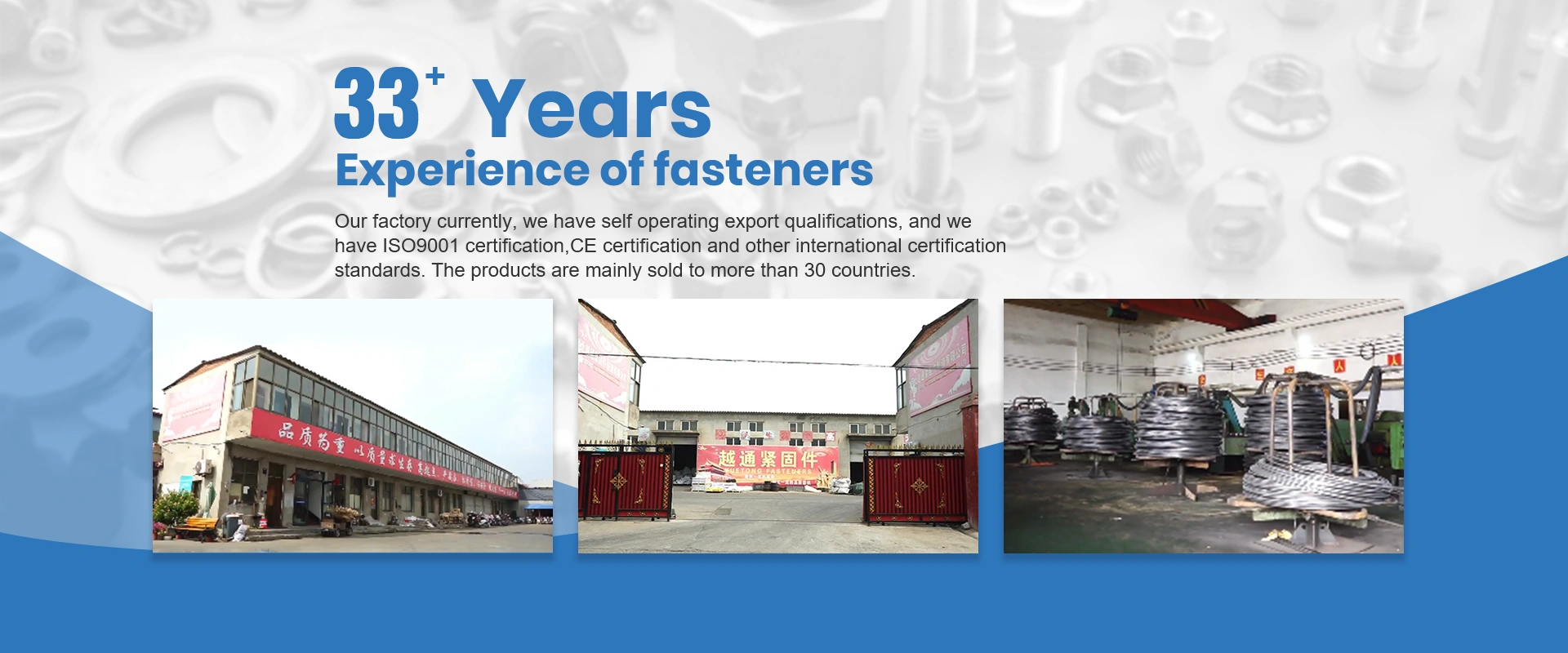Říj . 22, 2024 07:27 Back to list
Understanding the Functionality and Applications of Rigging Screws in Various Industries
Understanding Rigging Screws A Comprehensive Guide
In the world of rigging and heavy lifting, the rigging screw is an essential component that plays a critical role in ensuring safety and precision. Also known as a turnbuckle or tensioning device, a rigging screw is designed to adjust the tension in cables or ropes, allowing for the fine-tuning of rigging systems. This article will explore the structure, uses, and important considerations when using rigging screws.
Construction and Design
Rigging screws typically consist of two threaded end fittings connected by a central body that can be elongated or shortened. The threads allow for smooth adjustment of the length of the assembly, providing the necessary tension to cables, ropes, or chains. They are often made from high-strength materials such as steel or aluminum to withstand heavy loads and resist corrosion.
The design of a rigging screw can vary based on its intended application. Common configurations include open body turnbuckles, closed body turnbuckles, and specialized rigging screws for specific industries like marine, construction, and telecommunications. Each type is engineered to fulfill specific needs, ensuring that they perform optimally under various conditions.
Uses of Rigging Screws
Rigging screws are widely used across various industries, including construction, maritime, theater, and telecommunications. They serve several primary functions
1. Tension Adjustment In outdoor settings like construction sites or sailing, rigging screws are used to adjust the tension of cables or stays in a structure, preventing slack and ensuring stability.
2. Load Balancing In theater rigging, these devices help balance the load of suspended props or sets, allowing for safe movement and positioning.
3. Inline Application In telecommunications, rigging screws can help stabilize antennae and other equipment necessary for effective communication.
4. Structural Integrity Whether in buildings, bridges, or marine applications, maintaining the proper tension in cables is crucial for the structural integrity of a system.
rigging screw

Safety Considerations
When working with rigging screws, safety should always be the top priority. Here are some key considerations to keep in mind
1. Load Ratings Always adhere to the manufacturer's specifications regarding load ratings. Exceeding these limits can lead to catastrophic failures.
2. Regular Inspections Periodically check rigging screws for wear and tear, including corrosion and deformation. Address any issues before using them in load-bearing applications.
3. Proper Installation Ensure that rigging screws are installed correctly, with the right orientation and secure connections. Loose or improperly positioned turnbuckles can compromise the entire rigging system.
4. Use of Locking Mechanisms Implementing locking nuts or safety pins can further ensure that any adjustments made to rigging screws remain secure under tension.
5. Training and Expertise Ensure that all personnel handling rigging screws are trained and knowledgeable about their use and capabilities. Only qualified individuals should perform rigging tasks.
Conclusion
The rigging screw is a vital tool in maintaining the safety and functionality of various rigging systems across multiple industries. Its ability to adjust tension makes it indispensable in applications that require precision and stability. Whether in construction, entertainment, or telecommunications, understanding the proper use and maintenance of rigging screws is essential for the safety and success of any project.
As with any rigging equipment, always prioritize safety and adhere to best practices to ensure the longevity and reliability of your rigging components. By doing so, you will not only protect your investment but also safeguard the well-being of everyone involved in your operations. The versatility and effectiveness of rigging screws make them an important element in the world of heavy lifting, and with the right knowledge, they can be utilized effectively and safely.
-
The Ubiquitous Reach of DIN934 in Application Realms
NewsMay.16,2025
-
Exploring Different Bolt Types
NewsMay.16,2025
-
Cracking the Code of Sleeve Anchor Mastery
NewsMay.16,2025
-
Clamp Design Principles,Types and Innovations
NewsMay.16,2025
-
Artistry Inspired by the Humble Anchor Bolt
NewsMay.16,2025
-
A Deep Dive into Screw Types
NewsMay.16,2025


